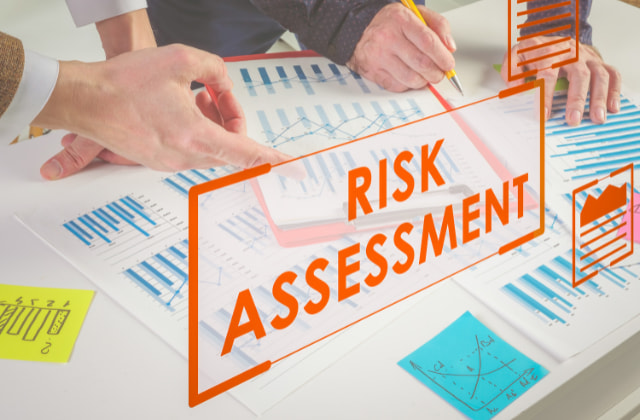Navigating the Challenges: Understanding the Importance of Risk Management
Navigating the Challenges: Understanding the Importance of Risk Management
Blog Article
The Important Relevance of Risk Management in Achieving Organizational Objectives
In the swiftly advancing business landscape, the capacity to browse uncertainty has come to be a crucial. This is where Risk Management action in, supplying an organized technique to identifying, assessing, and mitigating potential obstacles to proceed. It's greater than just a safety measure - it's a strategic device, cultivating strength and advancement. As we discover the critical role of Risk Management in achieving business objectives, one can not aid yet question: just how does this translate right into real-world success?
Recognizing the Principle of Risk Management in Company

The Essential Duty of Risk Management in Strategic Preparation
Incorporating Risk Management right into critical preparation serves as a guard for organizations, anchoring their long-lasting strategies with a strong foundation of preparedness and durability. It operates as the organization's radar, identifying possible risks and vulnerabilities that can disrupt the course in the direction of accomplishing their stated goals. Risk Management offers a structure for expecting uncertainties and creating appropriate responses, making sure the organization's survival and prosperity also despite difficulty. By integrating Risk Management right into calculated preparation, organizations can transform these uncertainties right into chances for development and innovation. This strategic interweaving of Risk Management cultivates flexibility, making organizations extra durable and enabling them to navigate the ever-changing organization landscape confidently. Subsequently, Risk Management ends up being a crucial tool in calculated planning, important in securing lasting success.

Methods for Identifying, Assessing, and Focusing On Threats
The procedure starts with Risk identification, employing devices such as SWOT analysis, which helps in determining prospective threats and opportunities. Next, Risk evaluation is conducted to identify the potential impact and probability of each Risk. Threats are prioritized based on their possible impact and chance, enabling companies to concentrate their resources on high-priority threats.
Securing Organizational Workflow Through Efficient Risk Management
In the service landscape fraught with unpredictabilities, effective Risk Management plays a pivotal role in securing business procedures. It functions as a safety guard, minimizing the adverse results of potential dangers and ensuring the smooth performance of all processes. By recognizing and assessing potential dangers, Risk Management enables organizations to establish robust backup strategies. This preventive technique help in maintaining operational stability, also when faced with unanticipated circumstances. Basically, Risk Management is the lifeline that maintains the organizational operations afloat in the middle of unstable waters. It ensures not just the survival but the sustainable development of an organization, making it a vital tool in attaining organization goals. Organizations must spend in extensive Risk Management techniques to safeguard their operations.

Transforming Possible Dangers to Opportunities: The Power of Risk Management
While prospective risks might initially appear as obstacles to business success, reliable Risk Management can transform them into chances. A proactive strategy to run the risk of Management involves recognizing, analyzing, and focusing on threats to devise methods that transform them right into potential advantages. This process necessitates the development of a risk-aware culture home within the organization, urging individuals to see risks as possible catalysts for modification and growth, as opposed to simple threats. importance of risk management. Through this lens, prospective hazards become opportunities to introduce, enhance processes, and strengthen resilience. Hence, by leveraging the power of Risk Management, organizations can not just guard their operations however additionally stimulate development and achieve their goals in an unforeseeable company environment.
Instance Researches: Success Stories of Risk Management Driving Service Objectives
Successful execution of Risk Management approaches has actually yielded remarkable results in numerous companies, highlighting the qualities of this technique. Multinational firms like Microsoft and Google, as an example, have actually leveraged Risk Management to minimize threats and manipulate possibilities, driving their company purposes forward. Microsoft's proactive Risk Management strategy assisted it pivot swiftly throughout the 2020 pandemic, transitioning to remote job efficiently, therefore maintaining performance. Google, by assessing and minimizing possible risks in its cloud-based solutions, has actually made certain uninterrupted service, thereby reinforcing consumer trust. These instances show just how effective Risk Management can not only steer organizations clear of potential risks but additionally guide them towards their strategic purposes. Therefore, Risk Management is important to the pursuit of organizational objectives.
Verdict
To conclude, Risk Management is basically important in achieving organizational goals. It uses an organized technique to recognizing, assessing, and resolving prospective risks and chances. More than simply mitigating risks, it likewise cultivates development, strength, and lasting development. By incorporating Risk Management into strategic preparation, services can better navigate unpredictabilities, guard procedures, official website and capitalise on possibilities, therefore straightening with long-term objectives.
At its core, Risk Management is the process of determining, examining, and attending to prospective dangers that might adversely impact an organization's goals or operations. Next off, Risk analysis is performed to ascertain the prospective her comment is here influence and probability of each Risk. Dangers are prioritized based on their possible influence and likelihood, allowing organizations to concentrate their resources on critical dangers. By identifying and examining possible risks, Risk Management enables companies to establish robust contingency plans. An aggressive technique to run the risk of Management includes recognizing, evaluating, and focusing on threats to devise methods that transform them right into possible benefits.
Report this page